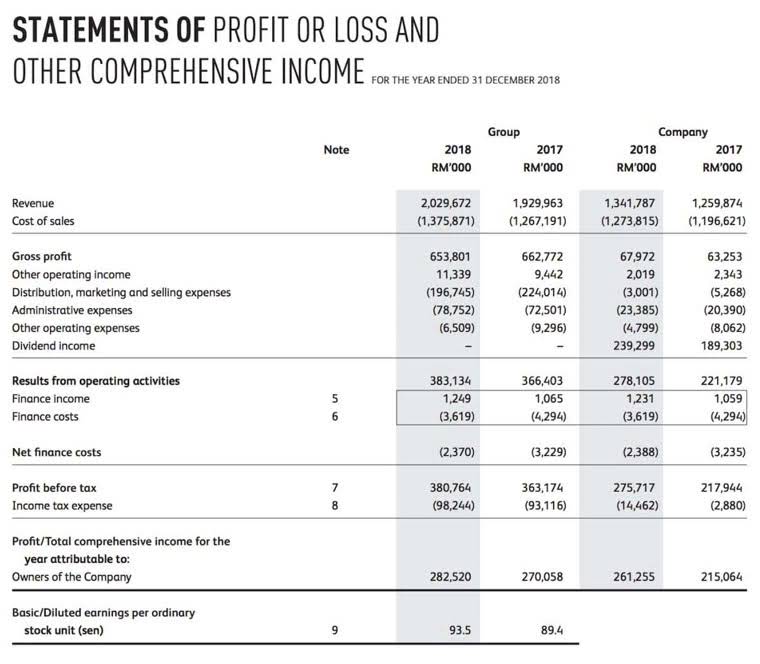
As such, there’s a threshold of $5,000 for tax year 2024 as part of a phase-in to implement the $600 reporting threshold. Form 1099 income typically isn’t subject to tax withholding, so you’ll want to make estimated, anticipatory tax payments to the IRS as the year passes. This should prevent you from being hit with a significant tax bill plus interest and penalties when you prepare your return and include income from one or more 1099s. Some 1099 forms source to obscure types of income but others are very common. These are a few that the average taxpayer might expect to find in their mailbox in January or February of the year following the payments. Because there are so many types of income and ways it is taxed, the IRS offers several 1099 forms for specific purposes, each with its own filing requirements.

Simple Ways to Track Your Monthly Expenses
Gig workers should track earnings and expenses closely to ensure they’re covering necessary costs while setting aside funds for taxes and savings. One effective strategy is to create a monthly budget based on unearned revenue average income rather than weekly fluctuations. Regardless of whether you receive a Form 1099-NEC, you must report all income earned on your tax return. Keep in mind that if you’re an independent contractor, you still need to report all your income. Even if you did less than $600 of work for a client and never received a 1099.

How many different 1099 forms are there and what are they used for?
Form 1099-NEC (nonemployee compensation) is for sole proprietors or limited liability companies (LLCs) that receive payments for their services. You’ll receive the form from clients by January 31 and report all income earned in the past year. The form is due to the IRS by February 1 and applies to every self-employed entity, independent contractor or gig worker who’s not treated as an employee. You’re required to file 1099-MISC (miscellaneous) to report payments received that don’t fall under nonemployee compensation.

PATR: Taxable Distributions Received From Cooperatives
If you’re unsure which Form 1099 to use and how to file it, let’s dive into the key small business 1099 forms. If you paid $600 or more to an unincorporated person or vendor for services related to your business using cash, check, or bank transfer (ACH) you need to issue them a 1099-NEC. Depending on where your business is based, you may also have to file 1099 forms with the state.

- — 1099-Q reports withdrawals from qualified education programs, such as 529 college savings plans and Coverdell education savings accounts.
- Filing 1099 forms may seem tedious, but it’s a crucial part of running a compliant business.
- The W-2 reports all money paid to an employee as well as withholdings for taxes and tax-deferred retirement accounts.
- If you are paying an independent contractor, overseas (e.g. programmers in Romania, copywriters in India, etc.) you do not have to issue them a 1099.
Form 1099-K records transactions from credit or debit cards and third-party payment networks. You might receive Form 1099-K if you worked a side gig and accepted payments through a third party such as Uber® or Rover®. You might even receive one from your crypto exchange if you dabbled Restaurant Cash Flow Management in crypto trading or from a payment app like Venmo®, if you sent and received money to friends.
Having contractors fill out a W-9 should be one of the first administrative tasks you complete after engaging their services. There what are 1099s for are significant penalties for misclassifying employees as independent contractors. Make sure you know how to tell the difference between an independent contractor and an employee before you submit a 1099. You may be sent one by a contactor, creditor, corporation, brokerage, retirement institution, or by the Social Security Administration. As the recipient, you may be an independent contractor or gig worker, retiree, trustee, or a policyholder.
- (That’s $600 or more over the course of the entire year.) The IRS uses this information to independently verify your income, and therefore your federal income tax levels.
- If you aren’t an employee on a business’ payroll but receive compensation from a business for services, you will receive a 1099-NEC.
- This credit helped eligible individuals — such as those receiving Trade Adjustment Assistance (TAA) or certain retirees — cover a portion of their health insurance premiums.
- Claiming legitimate deductions not only decreases your tax liability but also ensures you keep more of your hard-earned money.
- But if you don’t receive a copy of the 1099-NEC from your client, you should follow up with them.
For more information, see the IRS Tax Return Reviews by Mail publication. “There’s a variety of reasons why you might get a form, and 90% of the time you get a form it’s taxable,” Nellen says. They’ll need to send corrected versions to you and the IRS so your tax return isn’t held up in processing. Each January, your mailbox and email are likely filled with tax forms. Our partners cannot pay us to guarantee favorable reviews of their products or services.
An independent contractor is anyone you hire on a contract basis to complete a particular project or assignment. Common examples include graphic designers, web developers, copywriters, and social media consultants. For a full list of 1099 forms, including descriptions and online tax filing instructions, see our 1099 forms and instructions.

Neueste Kommentare